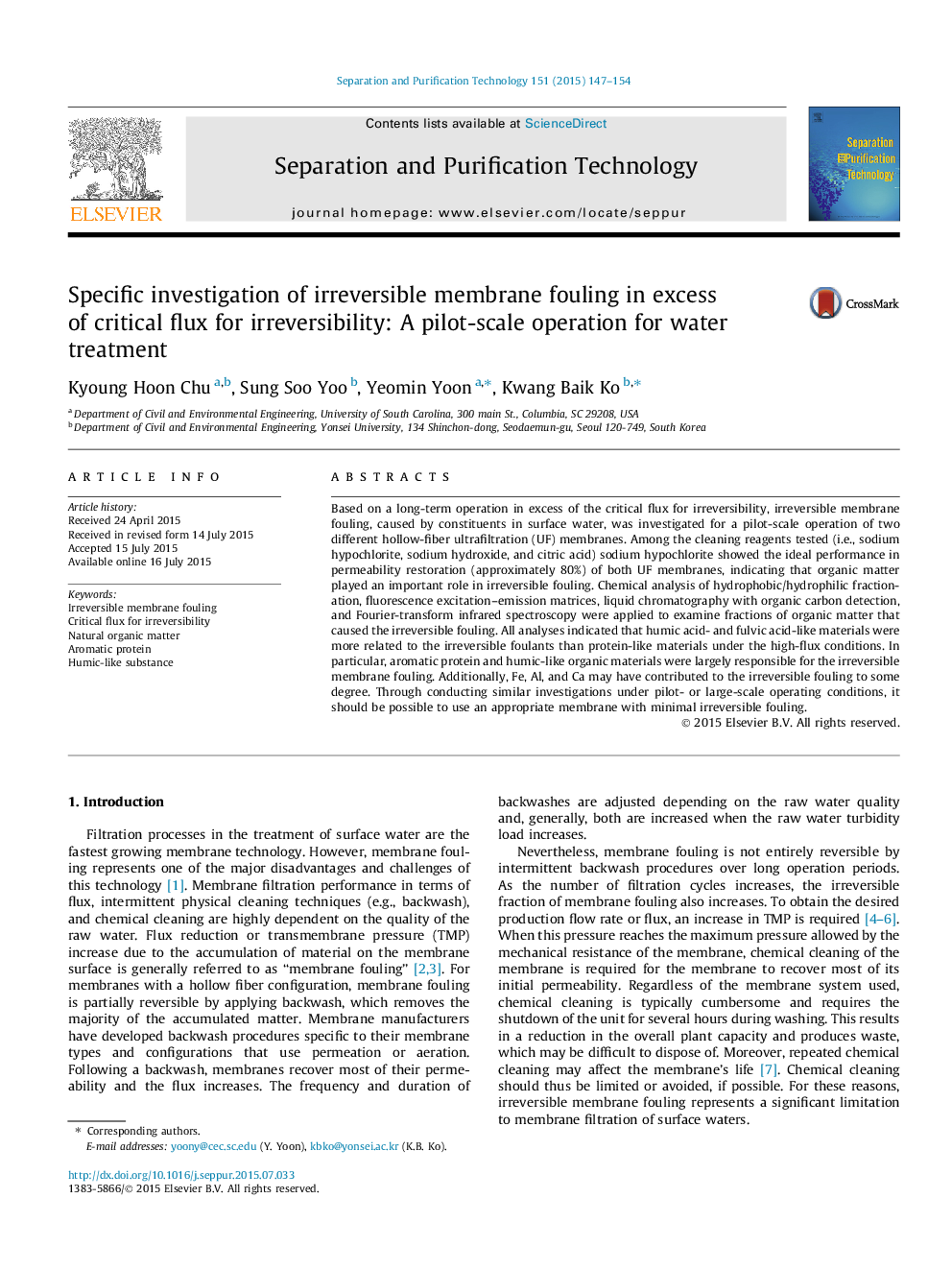| Article ID | Journal | Published Year | Pages | File Type |
|---|---|---|---|---|
| 640420 | Separation and Purification Technology | 2015 | 8 Pages |
•Long-term operation in excess of the critical flux for irreversibility was conducted.•We evaluated the recovery of water permeability by various chemical solutions.•Irreversible membrane fouling was also investigated for a pilot-scale operation.•Sodium hypochlorite showed the best performance in permeability restoration.•Aromatic protein and humic materials were responsible for the irreversible fouling.
sBased on a long-term operation in excess of the critical flux for irreversibility, irreversible membrane fouling, caused by constituents in surface water, was investigated for a pilot-scale operation of two different hollow-fiber ultrafiltration (UF) membranes. Among the cleaning reagents tested (i.e., sodium hypochlorite, sodium hydroxide, and citric acid) sodium hypochlorite showed the ideal performance in permeability restoration (approximately 80%) of both UF membranes, indicating that organic matter played an important role in irreversible fouling. Chemical analysis of hydrophobic/hydrophilic fractionation, fluorescence excitation–emission matrices, liquid chromatography with organic carbon detection, and Fourier-transform infrared spectroscopy were applied to examine fractions of organic matter that caused the irreversible fouling. All analyses indicated that humic acid- and fulvic acid-like materials were more related to the irreversible foulants than protein-like materials under the high-flux conditions. In particular, aromatic protein and humic-like organic materials were largely responsible for the irreversible membrane fouling. Additionally, Fe, Al, and Ca may have contributed to the irreversible fouling to some degree. Through conducting similar investigations under pilot- or large-scale operating conditions, it should be possible to use an appropriate membrane with minimal irreversible fouling.
